Located in the Eastern Himalayas, the Pangolakha Wildlife Sanctuary, Sikkim, has it all for people interested in nature and wildlife. This reserve in Sikkim spreads almost 500 sq km and is the most interesting mingle of different regions, including the forest and the sloping meadows. The sanctuary is also a habitat for snow leopard, red panda, and many species of pheasants. Due to its untouched aesthetic sceneries and serenity, the terrace of the sanctuary has become famous for treks, bird watching, and witnessing the grandeur of Himalayan biodiversity.
Location
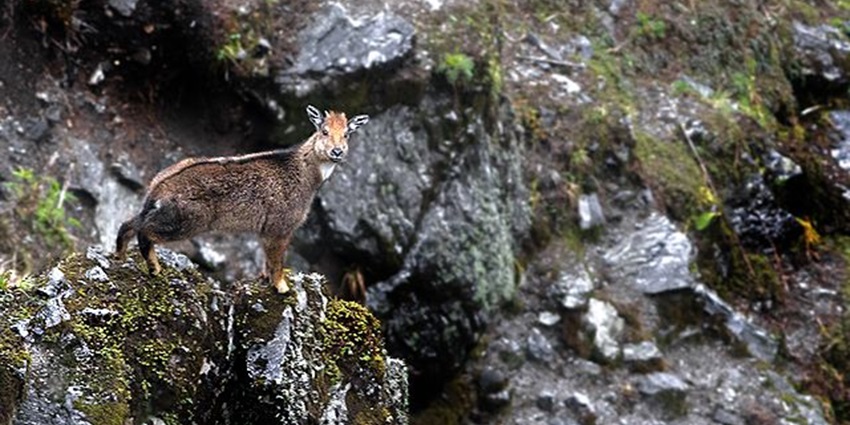
Photo: Dibeyendu Ash / Wikimedia Commons
Pangolakha Wildlife Sanctuary is in Sikkim, hidden in the Eastern Himalayas. The sanctuary is located near the Tibetan border and encompasses sections of the East Sikkim district. Its distant and picturesque position offers stunning views of the mountains and lush landscapes, making it an ideal refuge for nature lovers and wildlife enthusiasts.
Suggested Read: Top Offbeat Places In Sikkim For Your Next Surreal Trip
How To Reach
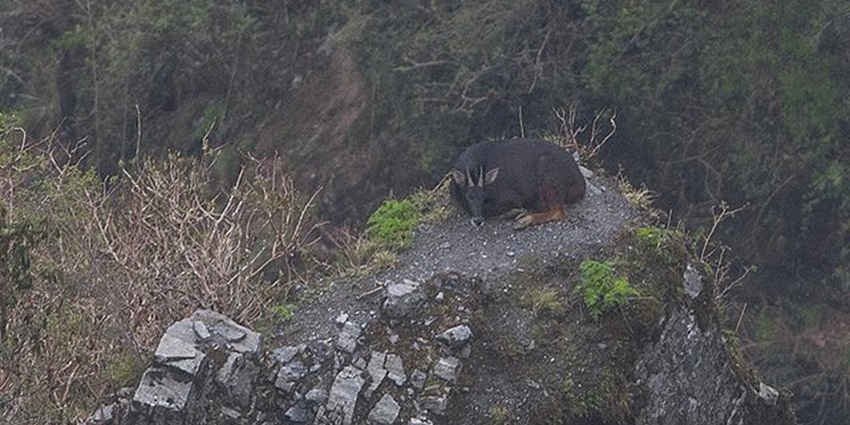
Photo: Dibyendu Ash / Wikimedia Commons
By Air: Fly to Bagdogra Airport (IXB), the nearest major airport around 150 km from the refuge.
By Rail: Reach the about 150 kilometre distance to New Jalpaiguri Railway Station (NJP).
By Road: From Bagdogra or NJP, take a cab or drive through the picturesque route to Pelling, then continue to the sanctuary. The trek will take you over steep terrain, so prepare appropriately.
Places To Visit Around Pangolakha Wildlife Sanctuary
Discover a blend of natural beauty and cultural charm around Pangolakha Wildlife Sanctuary. Visit serene lakes, forest trails, mountain villages, and scenic spots ideal for peaceful getaways.
1. Pelling
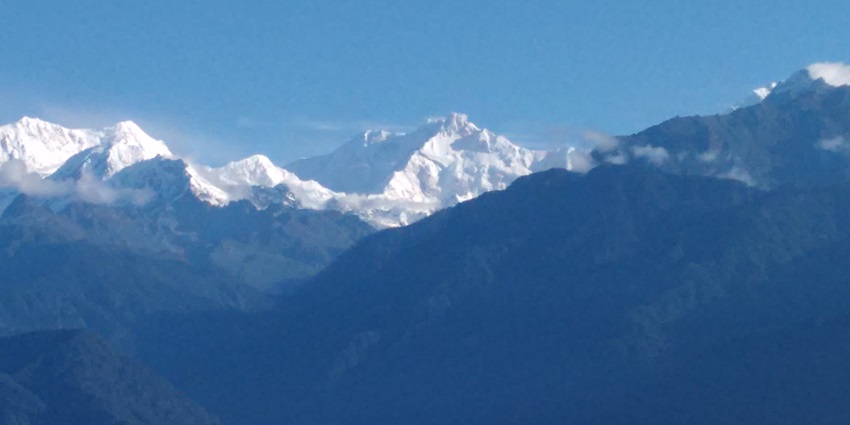
Photo: Santhosh.hugar / Wikimedia Commons
Pelling is a lovely hill village in Sikkim with breathtaking views of the spectacular Kanchenjunga, the world’s third-highest mountain. The historic Pemayangtse Monastery, known for its elaborate wooden carvings, and the stunning Khecheopalri Lake, a holy spot surrounded by calm woodlands, are must-sees. Pelling’s colourful local markets and cosy hotels give a warm welcome, making it an excellent base for visiting regional sites.
Timings: Varies within places to visit in Pelling
Entry Fee: Varies within places to visit in Pelling
Suggested Read: Explore Places To Visit In Pelling
2. Khecheopalri Lake
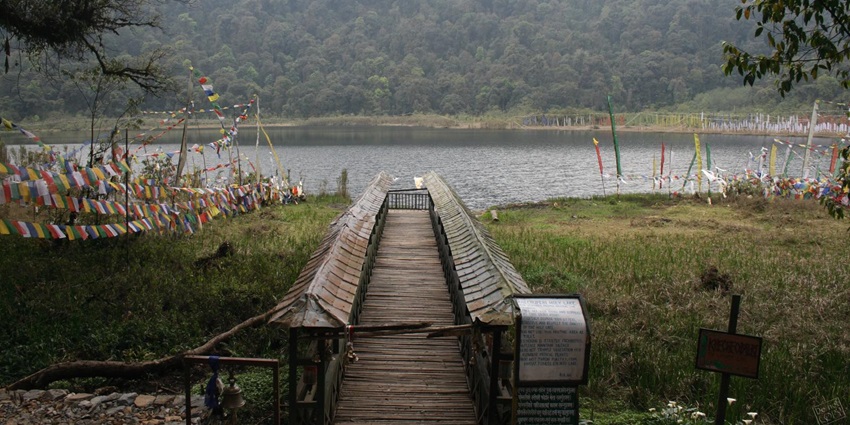
Photo: Kothanda Srinivasan / Wikimedia Commons
Khecheopalri Lake, near Pelling in Sikkim, is a beautiful and sacred water source surrounded by lush trees. The lake is said to grant wishes and is surrounded by lush flora, adding to its calm beauty. The clean blue waters reflect the sky and the surrounding hills, creating a lovely scene. The lake is also recognised for its immaculate surface, frequently clear of fallen leaves, demonstrating its spiritual value.
Timings: 6 AM – 6 PM
Entry Fee: ₹ 10 per person
3. Yuksom
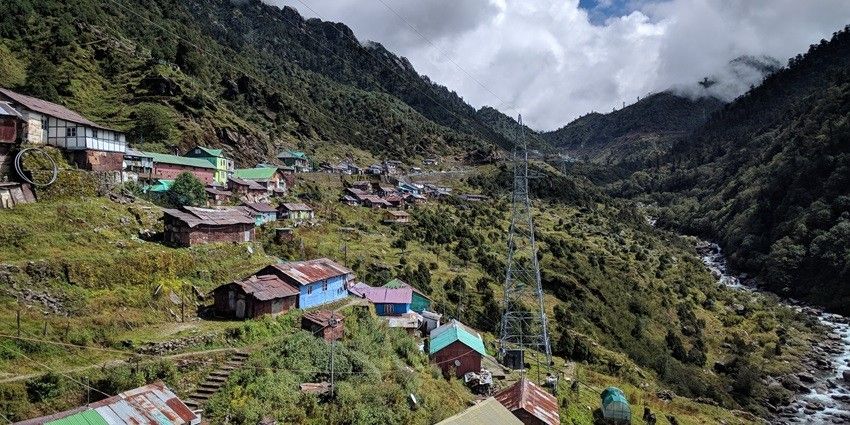
Photo: Shubhamshukla585 / Wikimedia Commons
Yuksom, a historical hamlet in Sikkim, is well-known as a cultural hub and the entrance to the Kanchenjunga area. Yuksom, known for its rich past, was previously Sikkim’s capital and is home to the famous Dubdi Monastery, the state’s oldest. The town provides breathtaking views of the mighty Kanchenjunga and is the starting point for hikes to Dzongri and Goechala. Yuksom, with its stunning scenery, historic buildings, and calm climate, offers a unique combination of cultural immersion and natural beauty.
Timings: Varies within places to visit in Yuksom
Entry Fee: Varies within places to visit in Yuksom
Suggested Read: Top Places To Visit In Namchi
4. Tsomgo Lake
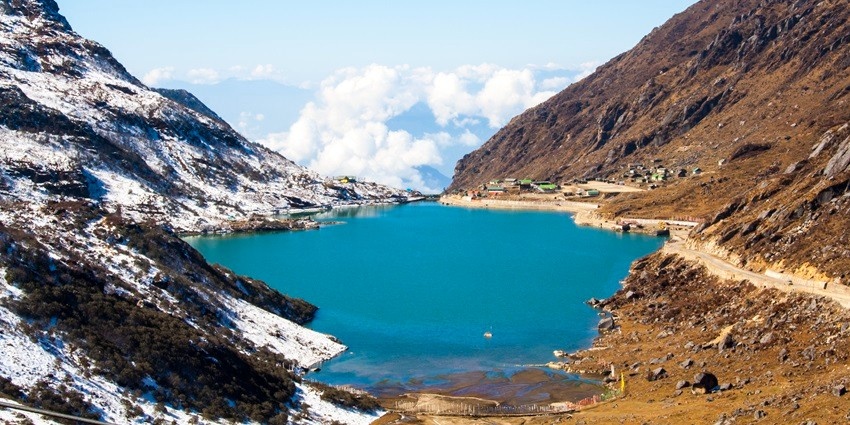
Photo: Indrajit Das / Wikimedia Commons
Tsomgo Lake, also known as Changu Lake, is a magnificent glacial lake in Sikkim, approximately 38 km from Gangtok. The lake, located at an altitude of 3,753 metres, is surrounded by gorgeous mountains and remains frozen during the winter. It is a significant spot for the native Sikkimese people, with a modest Shiva temple on its banks. Various flowers bloom around the lake in the spring, including rhododendrons and primulas.
Timings: Open daily from 10 AM – 3 PM
Entry Fee: None
5. Kupup Lake
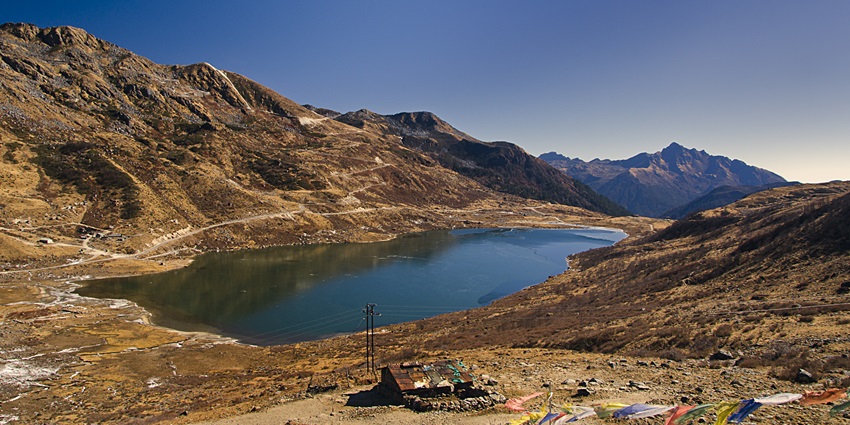
Photo: Timid Kundu / Wikimedia Commons
Kupup Lake, commonly known as Elephant Lake due to its distinctive shape, is a scenic high-altitude lake near the hamlet of Kupup in Sikkim. Nestled at around 13,066 feet, it provides stunning views of snow-capped mountains. Kupup Lake is a famous stop on the Old Silk Route, its pristine beauty and tranquil surroundings make it an ideal location for those seeking comfort in nature’s lap.
Timings: Open daily from 8 AM – 3 PM
Entry Fee: None
Suggested Read: Changu Lake In December
6. Zuluk
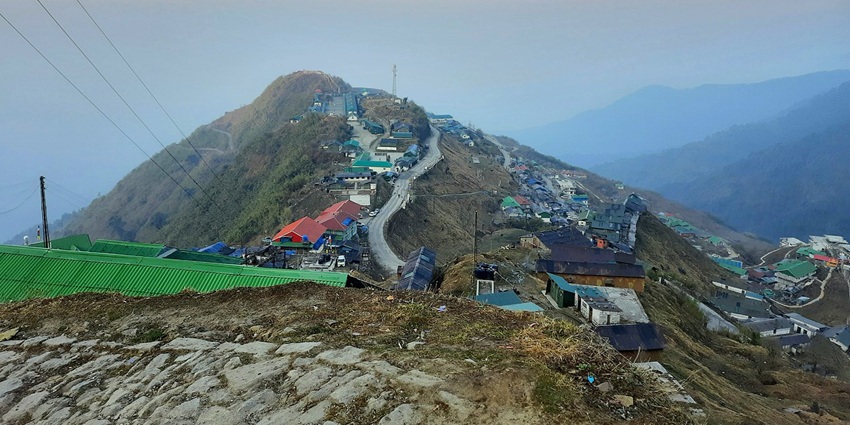
Photo: Tsen2006 / Wikimedia Commons
Tucked away in East Sikkim at nearly 10,000 feet, Zuluk is a quiet mountain village known for its winding roads and sweeping Himalayan views. The twisting route, with over 30 hairpin bends, draws road trip lovers eager for a scenic drive. Ideal to visit in spring or autumn, Zuluk offers a peaceful break from busy tourist spots. It’s also a great base for exploring lesser-known places to visit in Sikkim, like Thambi View Point, Lungthung, and the beautiful Nathang Valley.
Timings: Varies within places to visit in Zuluk
Entry Fee: Varies within places to visit in Zuluk
7. Nathang Valley
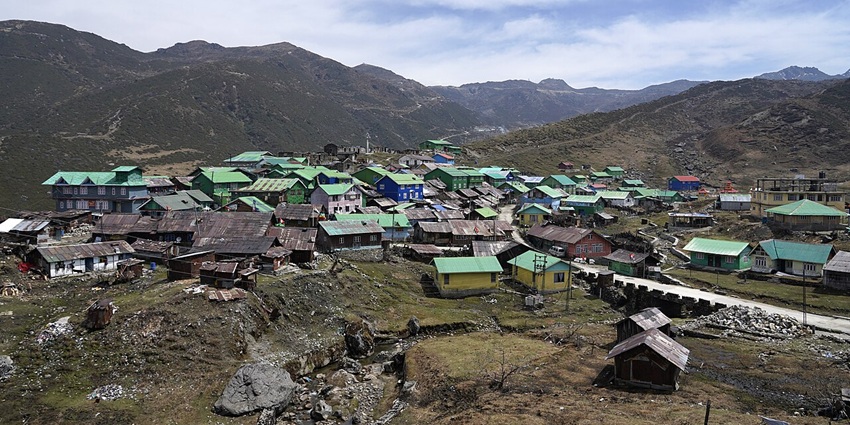
Photo: Amitabha Gupta / Wikimedia Commons
Nathang Valley is one of those places that leaves a lasting impression. Set at nearly 13,500 feet, it offers sweeping views of the mountains, open skies, and quiet meadows. Once a settlement for Tibetan yak herders, the valley now attracts visitors who enjoy peaceful landscapes and striking Himalayan scenes. In winter, it turns into a snowy retreat, while spring brings wildflowers across the hills. It’s among the most scenic places to visit around Pangolakha Wildlife Sanctuary, especially for nature lovers and photography enthusiasts.
Timings: Varies within places to visit in Nathang Valley
Entry Fee: Varies within places to visit in Nathang Valley
Suggested Read: Yumthang Valley In April
8. Lingdum Monastery
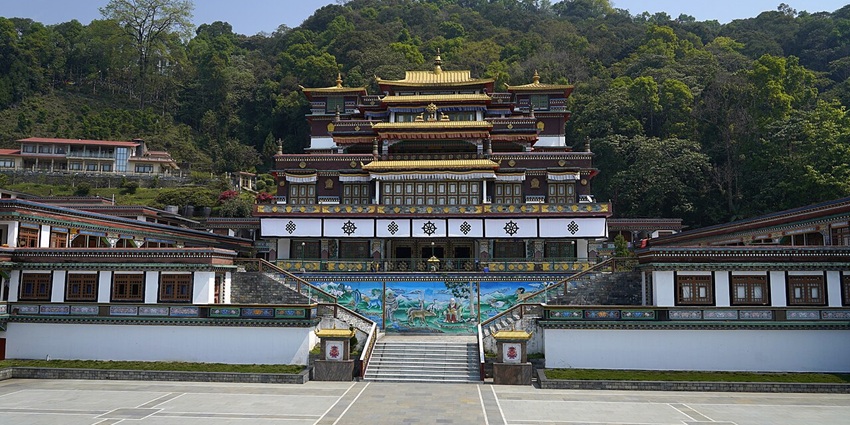
Photo: Amitabha Gupta / Wikimedia Commons
Tucked in the peaceful hills around an hour from Gangtok, Lingdum Monastery is a calm and scenic spot near Pangolakha Wildlife Sanctuary in Sikkim. Also known as Ranka Monastery, it was completed in the late 1990s and follows the Kagyu tradition. The site features a large courtyard, a striking golden Buddha statue, and colourful murals. During festivals like Losar, the monastery hosts traditional masked dances, making it a wonderful place to witness Sikkim’s spiritual and cultural charm.
Timings: Open 24 hours
Entry Fee: None
9. Menmecho Lake
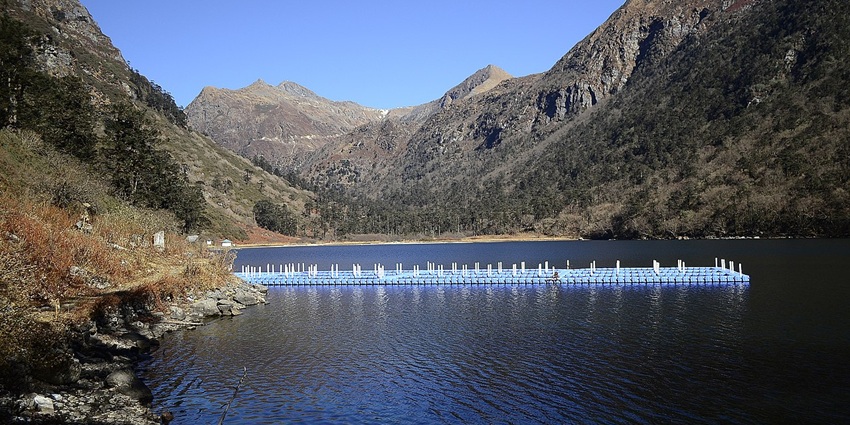
Photo: Arup1981 / Wikimedia Commons
Tucked away at about 12,500 feet in Sikkim’s Gangtok district, Menmecho Lake is a hidden alpine gem on the road to Jelep Pass, around 20 km from Pangolakha Wildlife Sanctuary. It’s fed by melting snow and monsoon rains, giving rise to the Rangpo Chu river. Surrounded by pine forests and rugged slopes, the lake is known for its ever-changing colours. With clear waters, sandy banks, and abundant trout, it offers a peaceful retreat – though entry is restricted and permits are needed to visit.
Timings: 8 AM – 5 PM
Entry Fee: None; Camping charges may vary
Suggested Read: Green Lake Trek In Sikkim
10. Old Baba Harbhajan Singh Ji Mandir
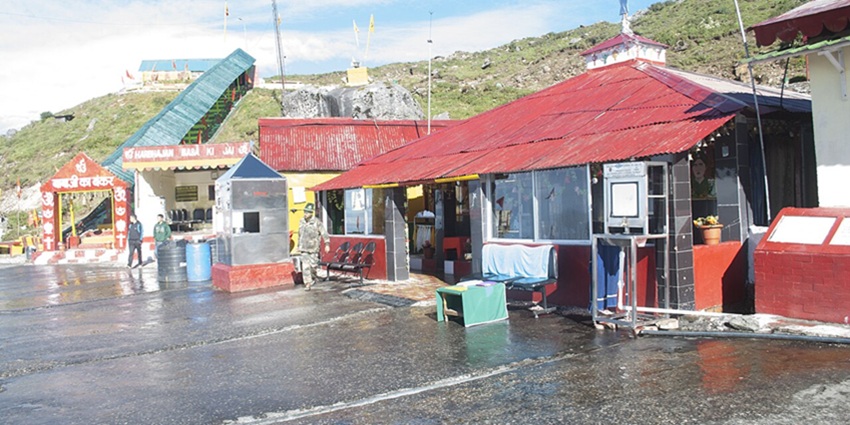
Photo: Rangan Datta Wiki / Wikimedia Commons
Tucked away near Chhokya Chho at nearly 4,000 metres, the Old Baba Mandir is a peaceful memorial dedicated to Sepoy Baba Harbhajan Singh. In 1968, he tragically lost his life after falling into a stream while leading a mule convoy. A shrine now stands where his body was later found – guided, it’s said, by a dream. Maintained by the Indian Army, this sacred site is reached by climbing 50 steps and is believed to be protected by the soldier’s loyal spirit.
Timings: 6 AM – 8 PM
Entry Fee: None
Where To Stay
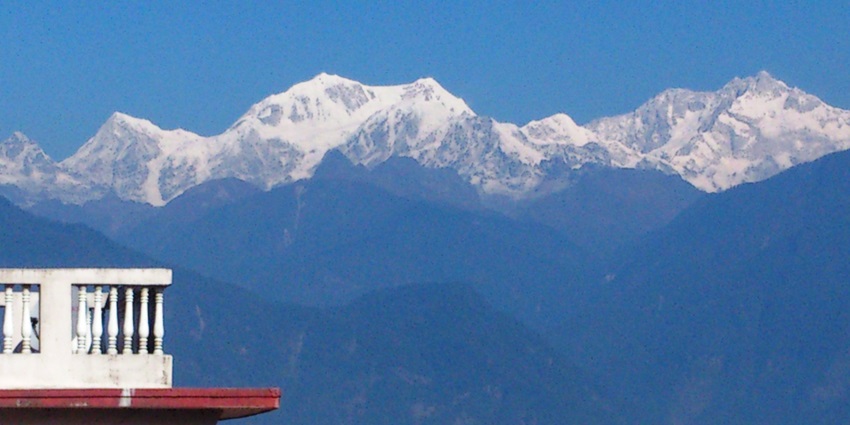
Photo: Nitin Ticku / Wikimedia Commons
Consider booking a room at the Pelling Ridge Hotel in Pangolakha Wildlife Sanctuary for a cosy stay and breathtaking Himalayan views. The Elgin Mount Pandim provides a magnificent experience within a lovely vintage home. Hotel Norbu Ghang offers affordable lodgings with needed facilities. All of these alternatives are conveniently located near the sanctuary and include a variety of amenities to make your wildlife excursion more comfortable.
Where To Eat
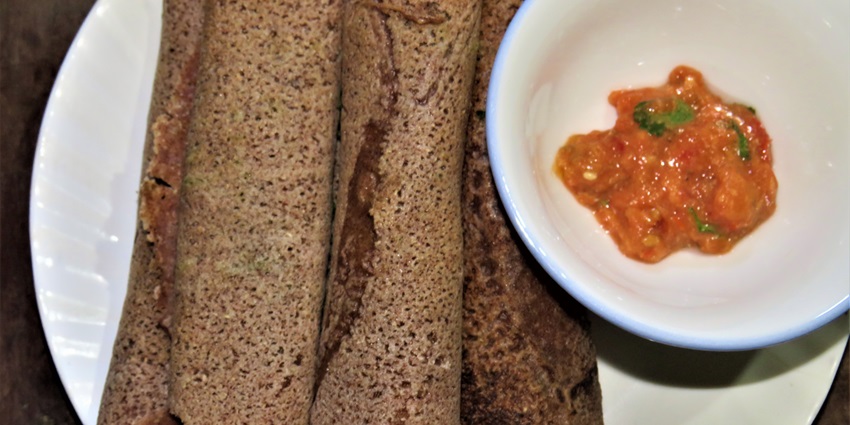
Photo: Pema Yangden Lepcha / Wikimedia Commons / Image For Representation Only
While touring the Pangolakha Wildlife Sanctuary, please stop by The Sherpa Kitchen in Pelling for local and international food, which is noted for its genuine Tibetan delicacies and welcoming atmosphere. Himalayan Café serves a broad cuisine with both Indian and Continental dishes, as well as magnificent views. For a more relaxed eating experience, Veggies Restaurant serves delicious vegetarian meals. These restaurants provide a wide range of flavours and are conveniently placed near the sanctuary.
Suggested Read: Discovering The Best Food In Gangtok
Other Factors To Consider
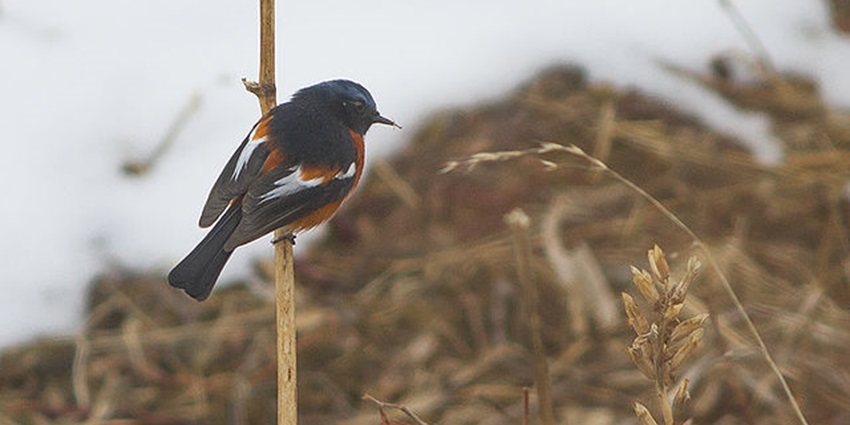
Photo: Dibyendu Ash / Wikimedia Commons
Average Cost Of The Trip
Trips to the sanctuary typically cost between ₹15,000 and ₹25,000 per person, including the Pangolakha Wildlife ticket price. This budget covers transportation, lodging, park entrance fees, and basic food. Costs might vary based on the trip season, length of stay, and personal preferences.
Tips For Travellers
- The weather can be chilly, especially at higher elevations, so bring layers.
- Bring enough water to stay hydrated on treks and trips.
- Keep a safe distance from animals and don’t disrupt their natural behaviour.
- Use biodegradable items to reduce your environmental effects and dispose of garbage correctly.
- Make sure you have the appropriate permissions for wildlife watching and hiking.
- Consider hiring a local guide to help you navigate and locate animals.
Pangolakha Wildlife Sanctuary is a must-see location for nature lovers and adventurers due to its exceptional natural beauty, unique wildlife, and tranquil surroundings. The sanctuary offers a unique experience in the Eastern Himalayas, with thrilling wildlife encounters and quiet walking pathways. Consider arranging your excursion with TripXL for a smooth and unforgettable journey.
Cover Photo: Dibyendu Ash / Wikimedia Commons


 WhatsApp
WhatsApp
 Twitter
Twitter









